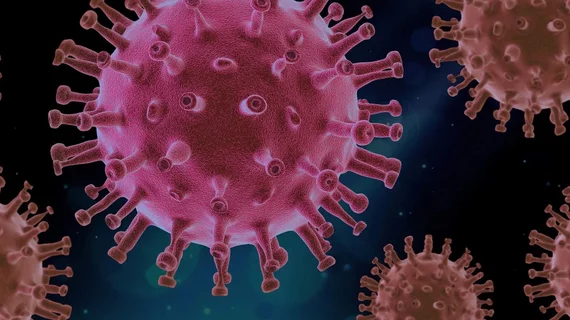There is growing evidence that, in addition to attacking patients’ lungs, the coronavirus also targets the central nervous system, causing adverse neurological symptoms.
And new research analyzing more than 70 patients with COVID-19, published Friday in Radiology, further solidified that hypothesis. More than half showed pathological MRI findings, with perfusion abnormalities most common, followed by acute ischemic lesions indicative of a stroke.
The Paris-based researchers also found two distinct neurological patterns, including basal ganglia abnormalities and white matter enhancing lesions. While the latter has been reported in a prior study, “reinforcing” its connection to COVID-19, the former—basal ganglia problems—have not.
“This pattern of brain damage has some similarities to that seen in encephalitis lethargica also known as Von Economo disease,” Lydia Chougar, with the Paris Brain Institute, and colleagues wrote, adding that an epidemic of this disease was reported during the 1918 flu pandemic.
Short-term, patients with EL suffer from pharyngitis or sore throat, sleepiness, and impacted eye movement. Some may also experience delayed symptoms of Parkinson’s disease and neuropsychiatric signs.
“The underlying pathophysiology of these two patterns and their association with COVID-19 remain unclear since SARS-CoV-2 RT-PCR in the cerebrospinal fluid was negative in all tested patients,” Chougar et al. wrote. “A relationship with COVID-19 appears however possible since these lesions were similarly observed in several patients and were not explained by another pathology or condition.”
The researchers performed their cross-sectional study between March 23 and May 7, 2020, at the Pitié-Salpêtrière University Hospital, a reference center for COVID-19 in the Paris area. Out of the 1,176 patients hospitalized during that time, 73 were included, while adults with a prior history of neurological disease were excluded.
Two to 8four weeks after neurological symptoms, 58.9% showed pathological MRI findings, including 22 with perfusion abnormalities, 17 acute ischemic infarcts, one case of deep venous thrombosis, and eight with microhemorrhages. Multifocal white matter enhancing lesions were spotted in four ICU patients and basal ganglia abnormalities in four others.
“Future imaging-pathological correlation studies will help determine whether there is a causal relationship between COVID-19 and brain MRI lesions,” the authors wrote. “A longitudinal monitoring will also be necessary to assess the long-term neurological impact of COVID-19.”
These results are among the latest in ongoing research into COVID’s effect on the brain. An MRI brain study published in June spotted three distinct neurological patterns on imaging, with signal abnormalities in the medial temporal lobe accounting for 43% of cases. Extensive and isolated white matter microhemorrhaging was noted in nearly a quarter of the group.
In order to help track and treat these individuals, Harvard- and Johns Hopkins-trained neurologist Majid Fotuhi, MD, PhD, said performing a baseline MRI prior to discharging patients from the hospital is “imperative.”

